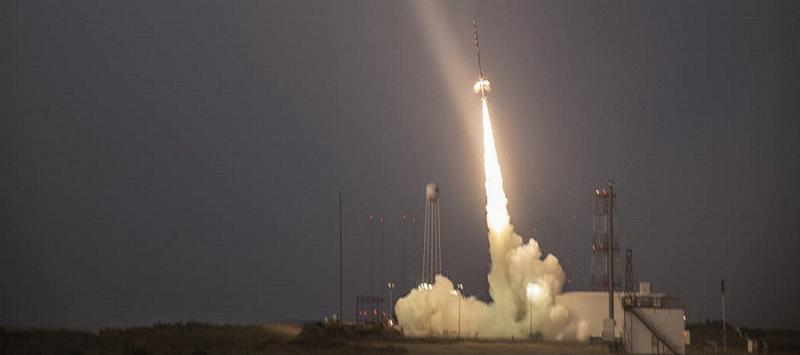Antonio Manaytay – Fourth Estate Contributor
Eastern Shore, VA, United States (4E) – NASA has announced the successful launch October 4 of Black Brant IX sounding rocket from Wallops Flight Facility in Virginia. The sounding rocket carried the Advanced Supersonic Parachute Inflation Research Experiment (ASPIRE) from the agency’s Jet Propulsion Laboratory in Pasadena, California.
NASA in a statement said: The ASPIRE payload ” flew to an altitude of approximately 31.62 miles and then landed in the Atlantic Ocean.”
“The payload is being recovered for data retrieval and inspection,” it added.
The successful launch of ASPIRE atop the 58-foot tall sounding rocket was part of series of tests as a risk-reduction activity for the planned Mars 2020 mission. The test was necessary in order to determine the expected loads and margins allowable on the parachute and payloads, sensor selection and where to place it, and assess the trajectory of the vehicle.
The paper, Simulations of Wakes and Parachute Environments for Supersonic Flight Test Design published in the Bulletin of the American Physical Society, said: “ASPIRE will investigate the supersonic deployment, inflation and aerodynamics of a full-scale disk-gap-band (DGB) parachute in the wake of a slender body at high altitudes over Earth.”
The parachute is a representative version of the DGB used in 2012 by Mars Science Laboratory and NASA’s Mars 2020 project.
The slender body is only a sixth of the diameter of the capsule, which will use the parachute as it will descend on the Red Planet. ASPIRE’S flight test design needs to determine its performance during deployment, inflation, and aerodynamic, which experimental data at present is very scarce,
Wallops Flight Facility hosts the agency’s Sounding Rocket Program.
Sounding rockets, from a nautical term “to sound,” take measurements. Sounding rockets have been used since 1959 to conduct tests on instruments to be used on satellites and spacecraft.
Previous sounding rockets investigations include the Compton Gamma Ray Observatory (CGRO) and TRACE satellite.
Article – All Rights Reserved.
Provided by FeedSyndicate





















